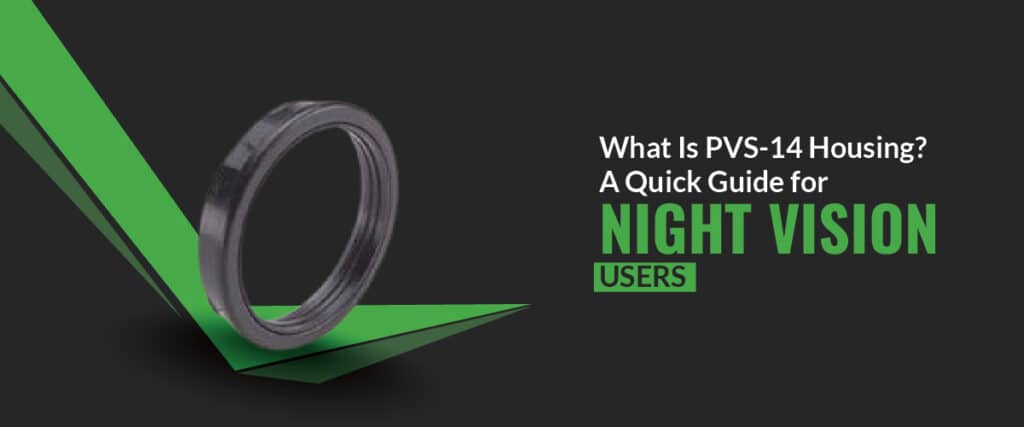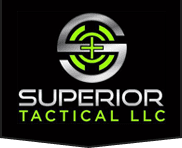What Is PVS-14 Housing? A Quick Guide for Night Vision Users

The PVS-14 casing is the frame or shell that contains all the elements of the PVS-14 night vision one-eye eyepiece together. It holds the image amplifier tube, lens elements, control systems, battery section, as well as control buttons. This housing is what provides the PVS-14 identifiable forms and long-lastingness. In the absence of it, the indoor parts will have no formation or shield, causing the device to be improper in use cases.
Why is Housing Important in Night Vision Devices?
Concurrently, most people focus on the night vision tube when dealing with infrared vision devices, while casing is also a critical thing. It makes sure that everything within the one-eye device is correctly arranged and performed. An improperly created or crooked shell can cause image twisting, faulty controls, or physical harm. A sturdy and well-made housing makes sure the one-eye viewer performs dependably in different types of daunting surroundings.
Main Functions of the PVS-14 Housing
The shell has different types of duties. At the start, it offers formative assistance, maintaining the optical and circuit components set. Plus, it enables outside contact by commands and attachment points. These perform together to create the shell, an important part in both long-lastingness and functionality.
Common Materials Used in PVS-14 Housings
Many PVS-14 housings are created from either tough plastics or featherweight metals. Military level housings are always made from built-up polymer, handling power and minimal weight. Some business or updated models make use of aluminium or even strong metal for additional strength. An upgraded shell may also come with hybrid materials that develop impact durability while maintaining minimal weight.
Weight and Ergonomics Considerations
The load is a very important section, particularly for head-mounted PVS-15 use. A bulkier metal shell may provide the best security, but it can put pressure on the time of long missions. Featherweight plastic shells are applied for prolonged abrasion and movement. The finest housing hits a compromise between long-lastingness and comfort design, depending on your functional requirements.
Waterproofing and Weather Resistance
Among the primary advantages of top-class PVS-14 casings are military level water defense and a climate-proof structure. Most can survive submersion in water as much as twenty meters deep. This is critical for users performing in moist, dirty, or frosty surroundings. On the other hand, financial plan or non-military level shells may only be splash-safe, affecting their performance exterior.
Control Interfaces on the Housing
The PVS-14 housing comes with outside controls like the power button, take control, as well as the infrared light source switch. These are all attached directly to the housing. A well-organized housing provides natural and reactive commands even when performed with handwear. Incorrectly made shells can result in poor or delicate buttons, influencing ease in the task.
Mounting Compatibility
An important trait of the PVS-14 enclosure kit is its capacity to attach to different mounting machineries, headmounts, firearm mounts, and camera stands. Military-type casings generally help quality mounts such as the swing arm and sliding mount. When opting for a housing, it is super important to make sure suitability with your current mounting equipment or target setup.
Durability in Field Conditions
Night vision operators always perform in difficult landscapes, during severe weather conditions, or in hassle surroundings. The PVS-14 enclosure kit has to resist collisions, pulsation, as well as rough use. High-class housing usually shows durable layers and shock-resistant building. Budget-friendly housing, while functioning, may break or wear out sooner under routine usage damage.
Modular and Custom Housings
Some upgraded housings often provide flexibility, enabling users to change components or update individual parts. This is especially helpful for custom builds or users who need to upkeep or develop their gadget as time goes on. Adaptable casing may present a swappable battery section, optical glass, or optical focus systems, providing adaptability for personalization.
When to Replace or Upgrade a Housing
In case your existing housing is broken, twisted, or has improper water protection, it might be a situation to change it. Refreshing the housing can help develop the usage time of your monocular. Consumers who originally bought entry-grade units always update their casing to a tactical-grade or metallic version for enhanced dependability in the field.
Opting for the appropriate PVS-14 enclosure kit is among the most critical decisions in updating or maintaining a night vision one-eyed optic. It immediately impacts long-lastingness, convenience, suitability, and dependability. Often, align your housing to your task requirements, and do not minimize its significance; ultimately, it is what holds your overall system as one.
